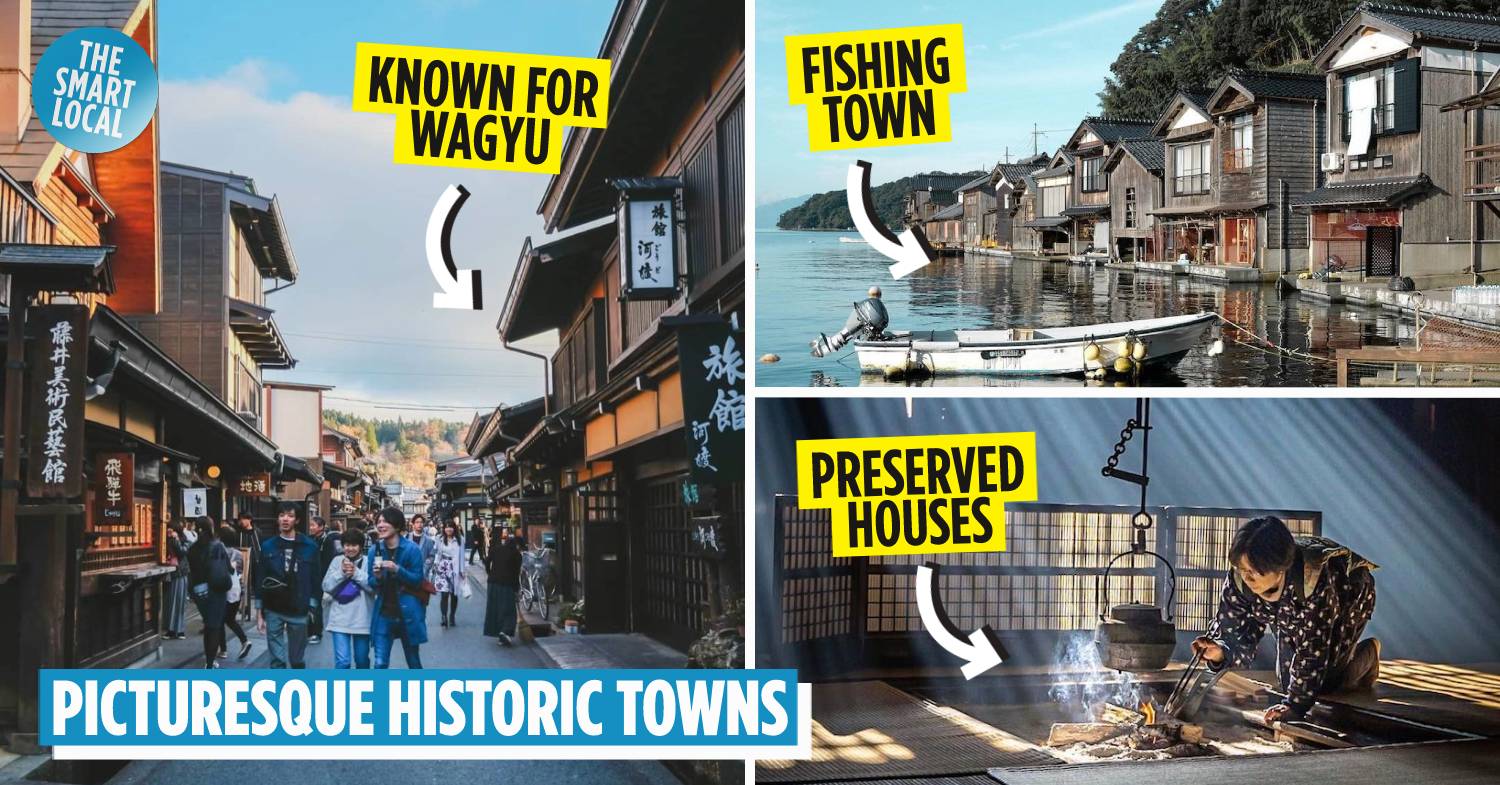Traditional Japanese towns
Most urban areas and major cities in Japan are covered with modern skyscrapers, but well-preserved historic districts can still be found dotted across the country. If you’ve already ticked Kyoto’s fabled Gion District off your bucket list and are looking for more, here are 8 quaint traditional Japanese towns that are worth visiting.
1. Higashi Chaya District – Kanazawa
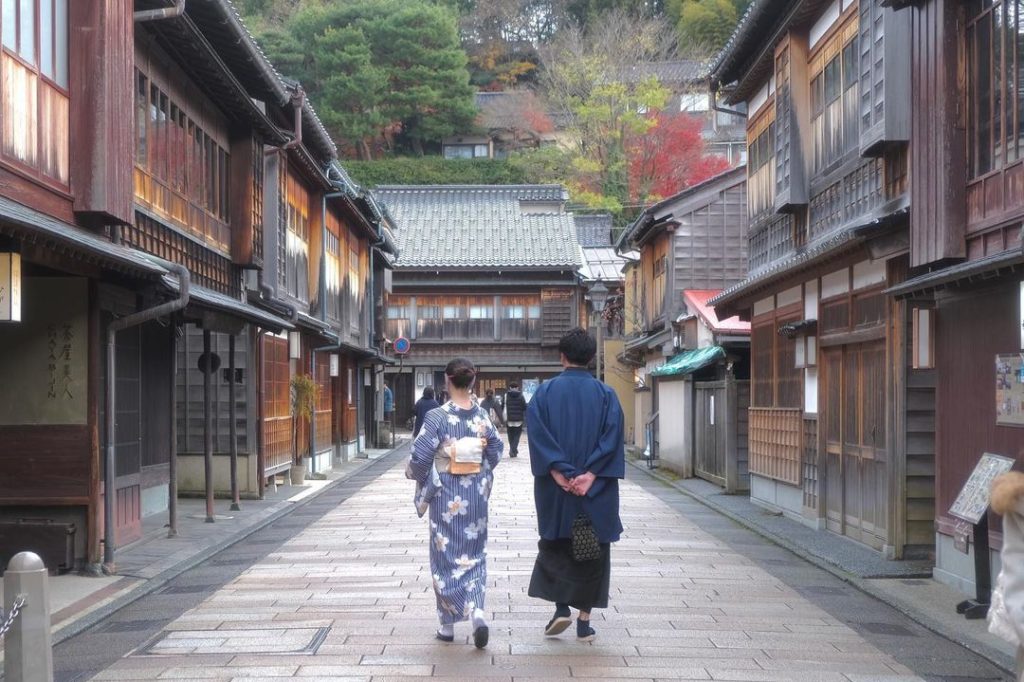
Image credit: @mimi_moment_
Besides Kyoto’s Gion, Kanazawa’s Higashi Chaya District is one of the few remaining traditional tea house districts in Japan. Spared from the damages of war and natural disasters, the beautiful chayas are well-preserved, retaining a nostalgic atmosphere of the Edo era.
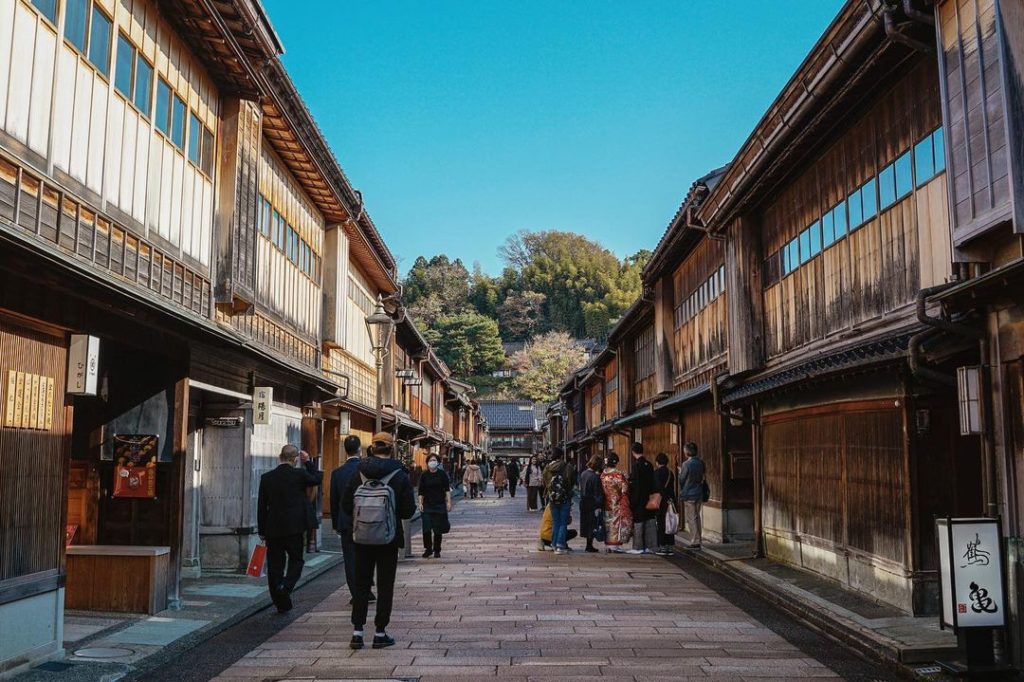
Image credit: @kidocchi.photo
While the word “chaya” (茶屋) translates to “tea house”, it’s neither a place to drink tea nor a shop that sells tea. It refers to traditional districts where geishas entertain affluent guests with elegant performances. Currently, there are 5 tea houses in the Higashi Chaya District, 2 of which are open to the public.
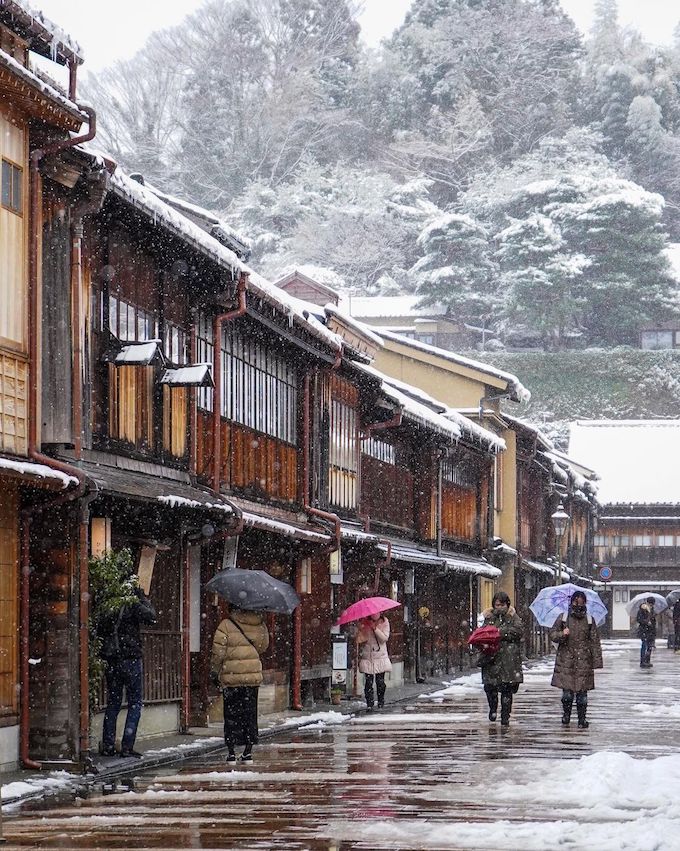
Image credit: @y_7colors_
Traditional wooden buildings with lattice windows (kimusuko; 木虫籠), an architectural feature unique to the townhouses, line the district. The wooden lattice makes it difficult for visitors to peek in from the outside, giving the tea houses some privacy from the gaze of tourists.
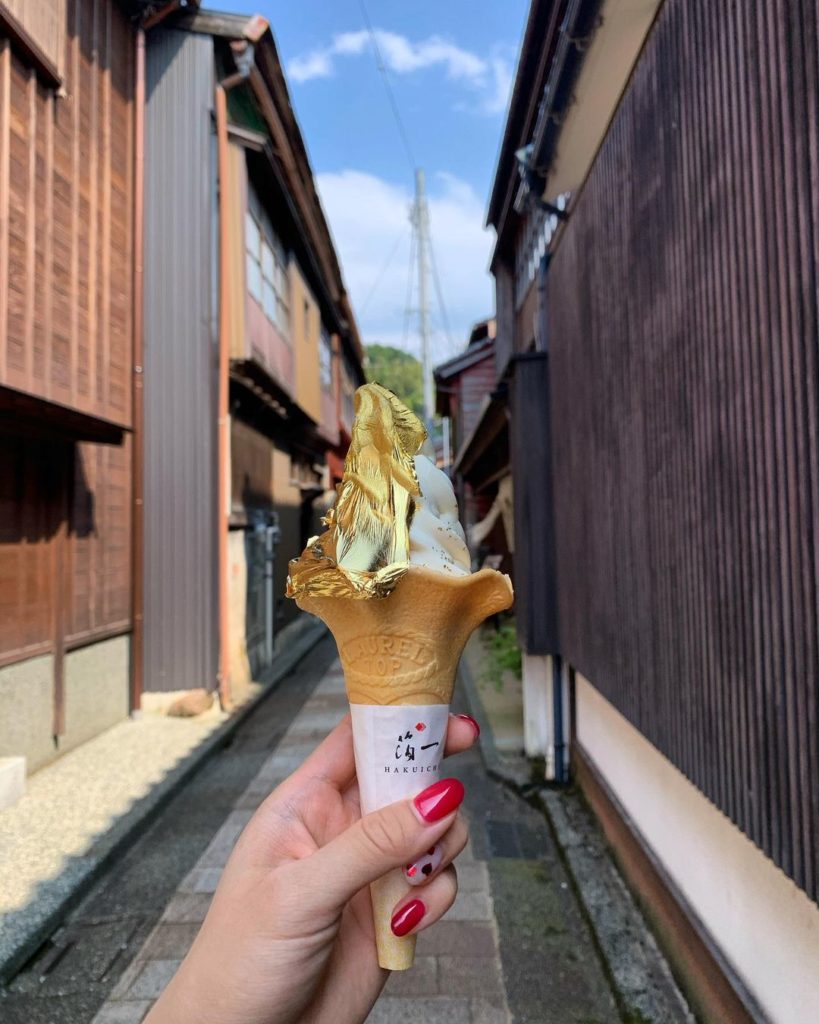
Soft serve ice cream with gold leaf
Image credit: @naookamot0
While you’re there, we recommend giving the famous gold leaf soft serve (¥891, ~USD8.58) a try as the city has been known for its gold leaf production since the end of the 1500s. Shops selling handicrafts and lacquerware containing gold leaf are also aplenty. If you’re looking for a unique souvenir to commemorate your trip, hit up these shops.
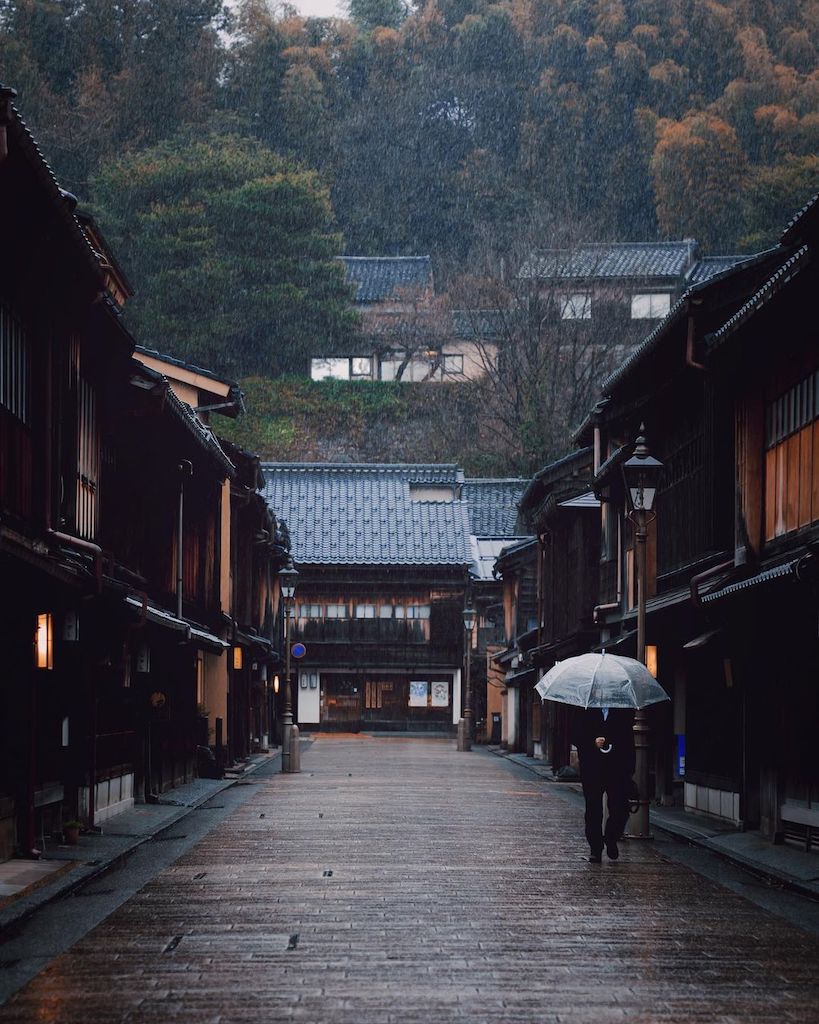
Image credit: @yukke.24
Opening hours: 24 Hours, Daily
Address: 1 Chome-13 Higashiyama, Kanazawa, 920-0831 Ishikawa
2. Old Town – Takayama
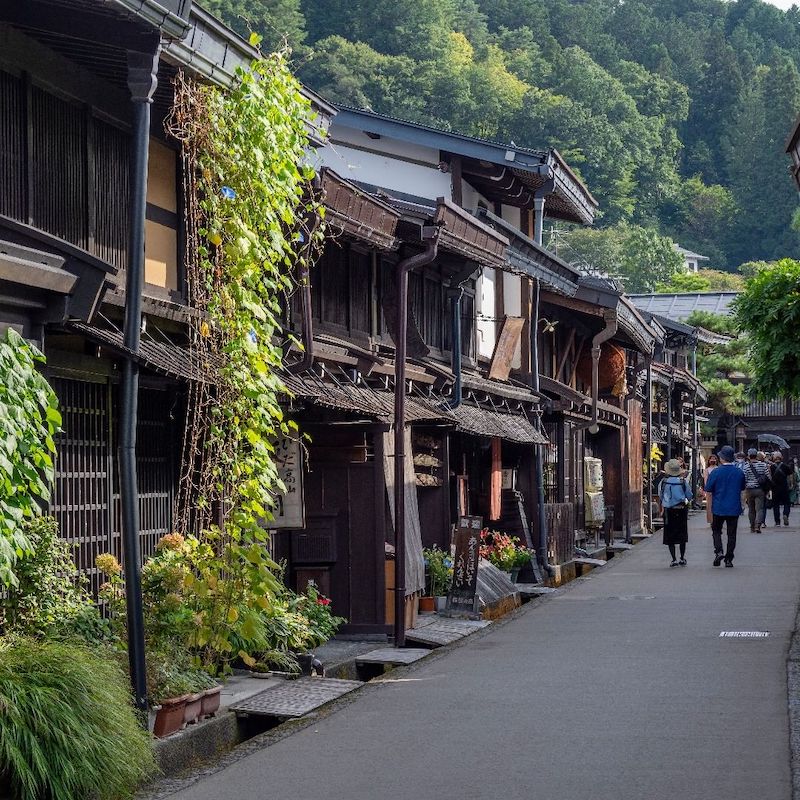
Image credit: @yamadam12345
Located in the heart of Takayama City, Gifu Prefecture, Old Town is a former merchant town that was prosperous during the Edo period. Often dubbed the “little Kyoto of Hida”, the area is considered one of the best preserved merchant districts in the country.
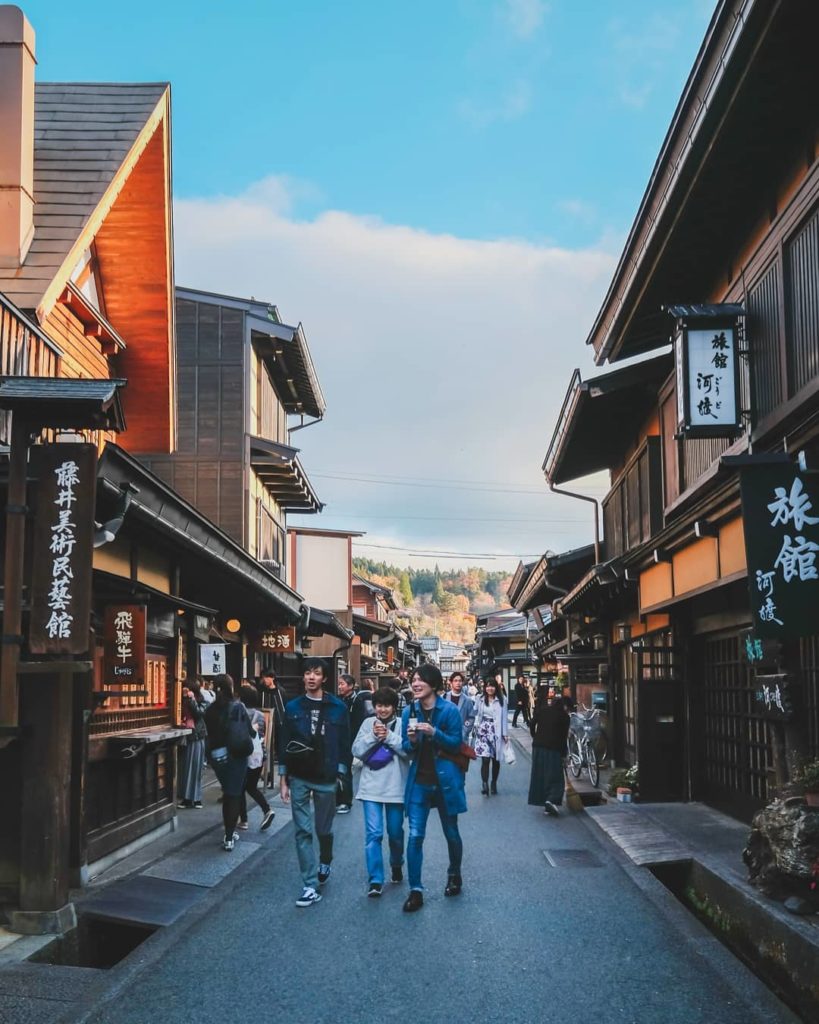
Image credit: @andytanumihardja
Special care has been taken to ensure that the scenic townscape is maintained. This includes running electric cables underground, as opposed to suspending them above the streets. Thanks to its historic townscape, Old Town attracts many visitors.
Most traditional buildings and warehouses in the district date back to as early as the late-Edo to Meiji period. Today, many of these old buildings have been transformed into shops, cafes, and even sake breweries. When the area is abuzz with tourists in the day, you can get a feel of the lively atmosphere that permeated Old Town in the olden days.
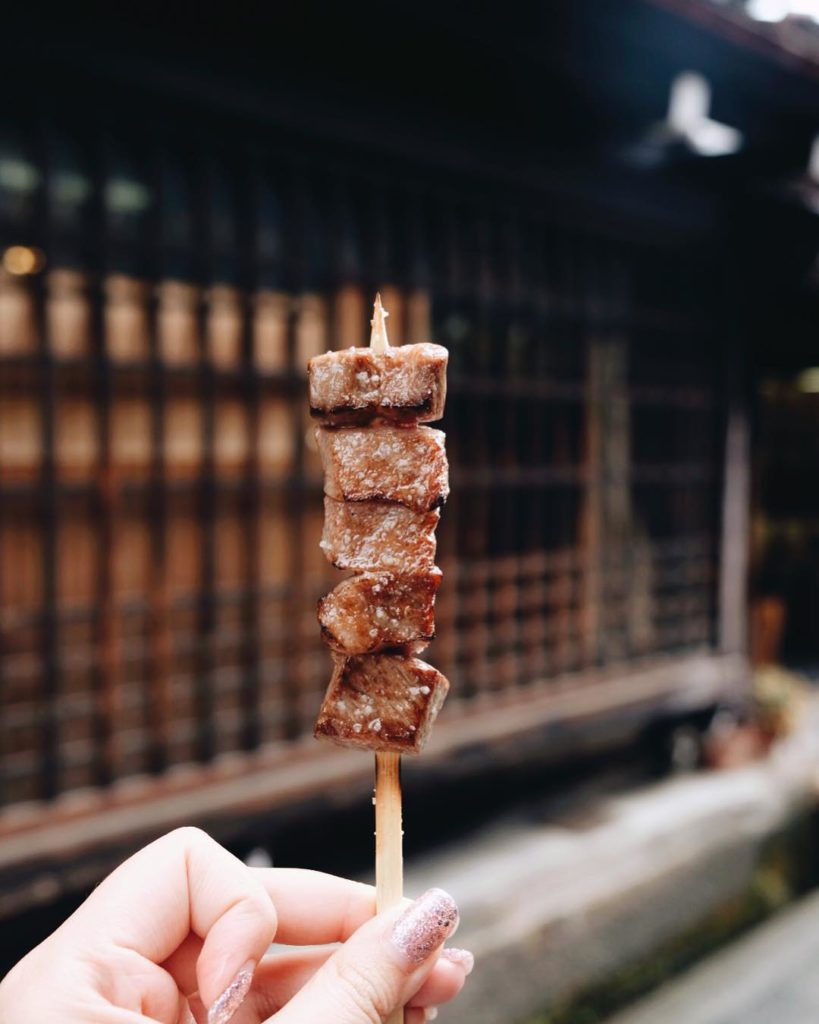
Grilled Hida beef
Image credit: @ceritayessica
One of the must-tries is the fabled Hida beef – high-quality Japanese beef from a specific type of cattle that’s raised in the region.
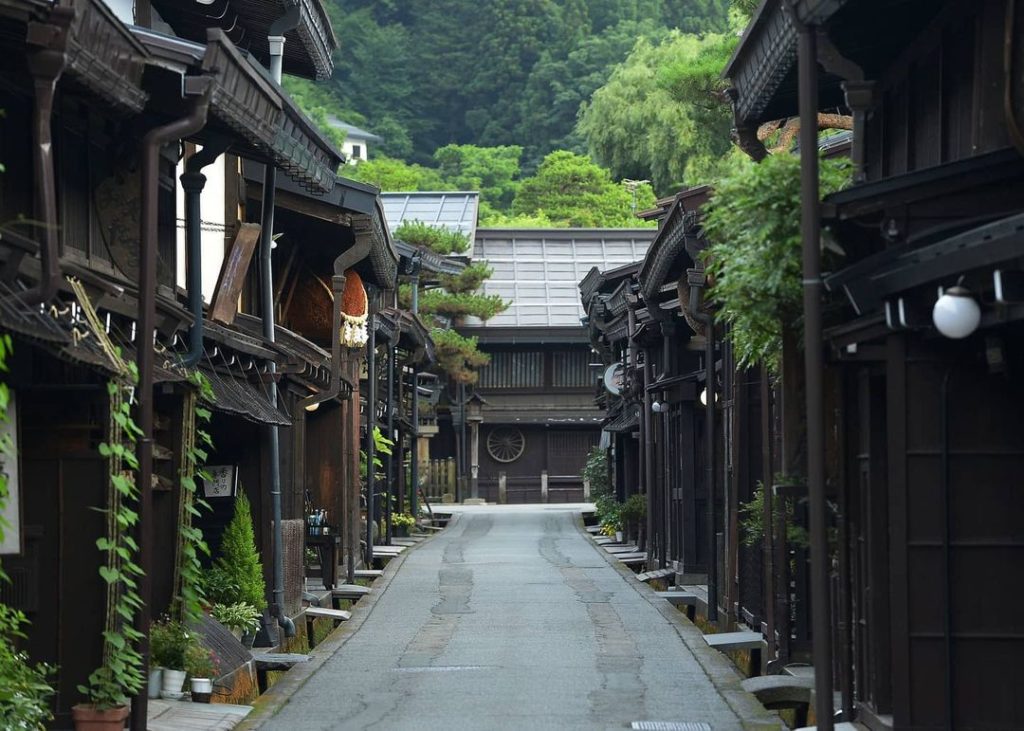
Image credit: @kyodanbe
Opening hours: 24 Hours, Daily
Address: 20 Kamisannomachi, Takayama, 506-0846 Gifu
3. Ōuchi-juku – Shimogō
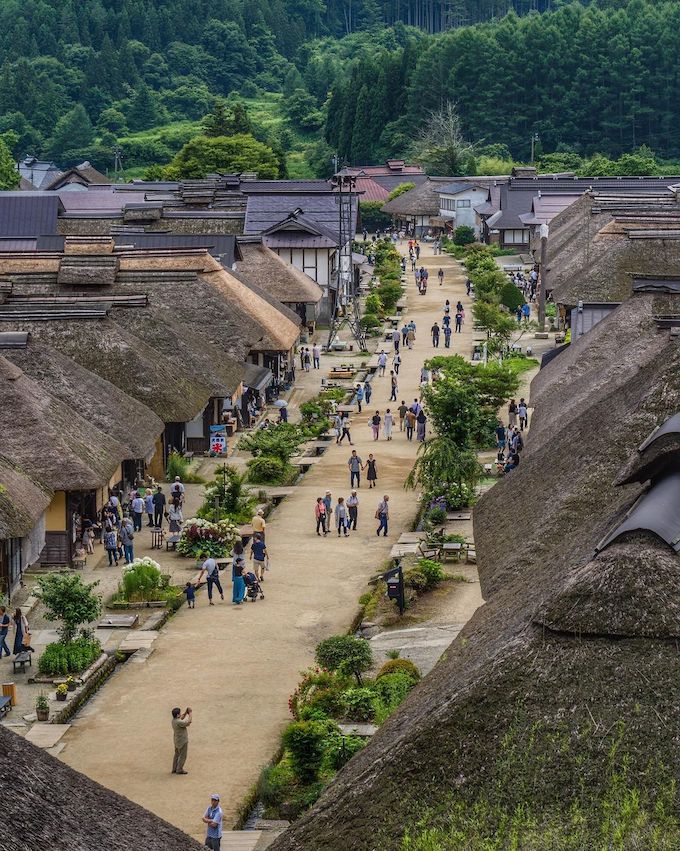
Image credit: @koudai.___
Situated in the small town of Shimogō, Ōuchijuku is a former post town (shukuba; 宿場) that thrived during the Edo period. Due to its location along the Aizu-Nishi Kaidō route – an important historic road that connected Aizu Wakamatsu city to Nikko – travellers who passed by Ōuchijuku would make a pit stop there before continuing on their journey.
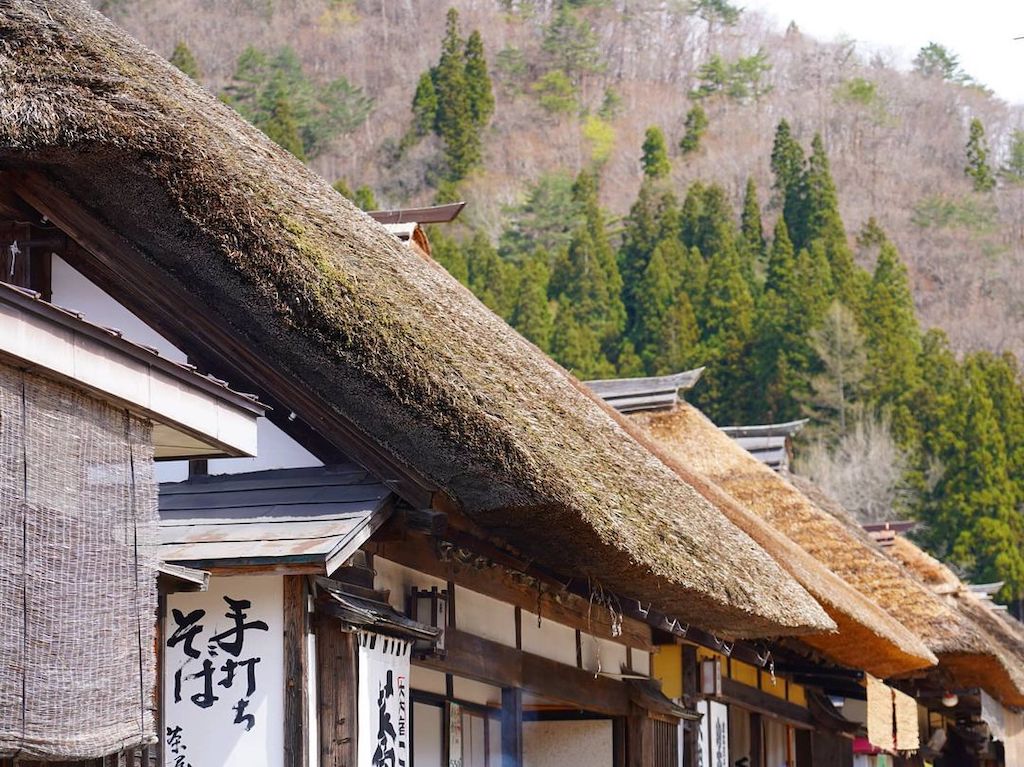
Image credit: @sonichero0722
Even now, the town is lined with traditional houses boasting thatched roofs built over 400 years ago. The special roof is made with Japanese pampas grass, which allows houses to stay cool in the summer and warm during the colder months.
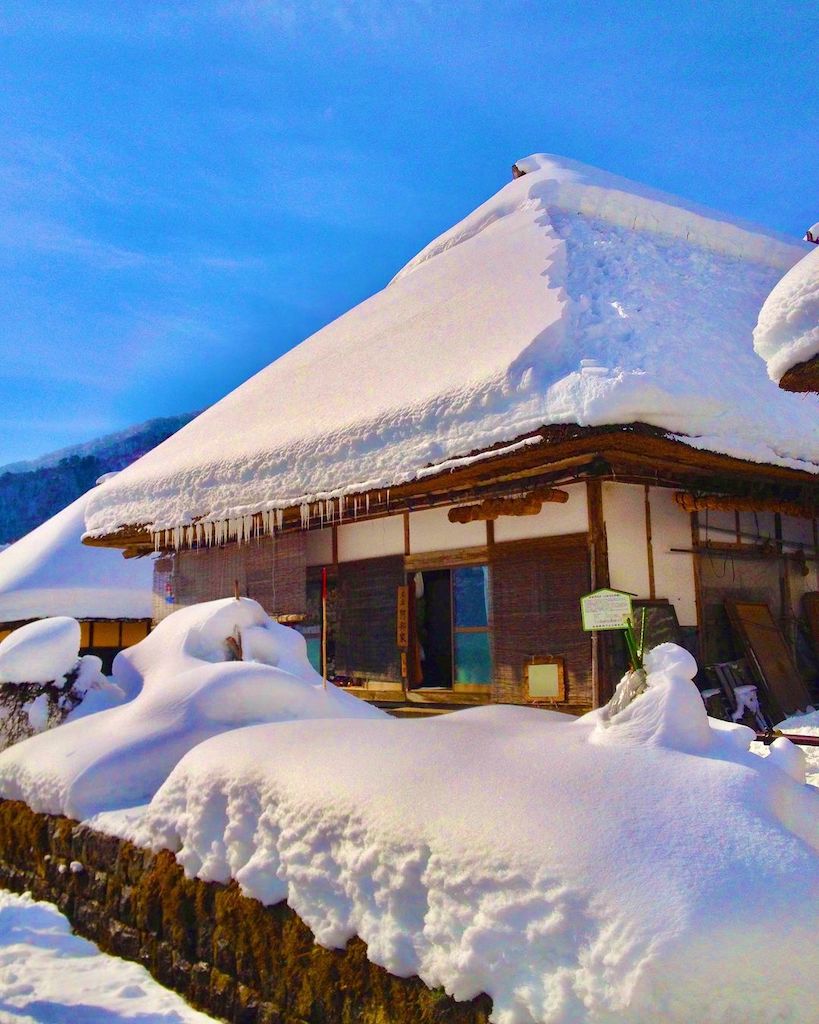
Image credit: @richann14
As the roofs are vulnerable to fire, water is sprayed on the houses on 1st September each year. Villagers also work together to reroof roofs periodically, as consistent upkeep is required to preserve the traditional roofing.
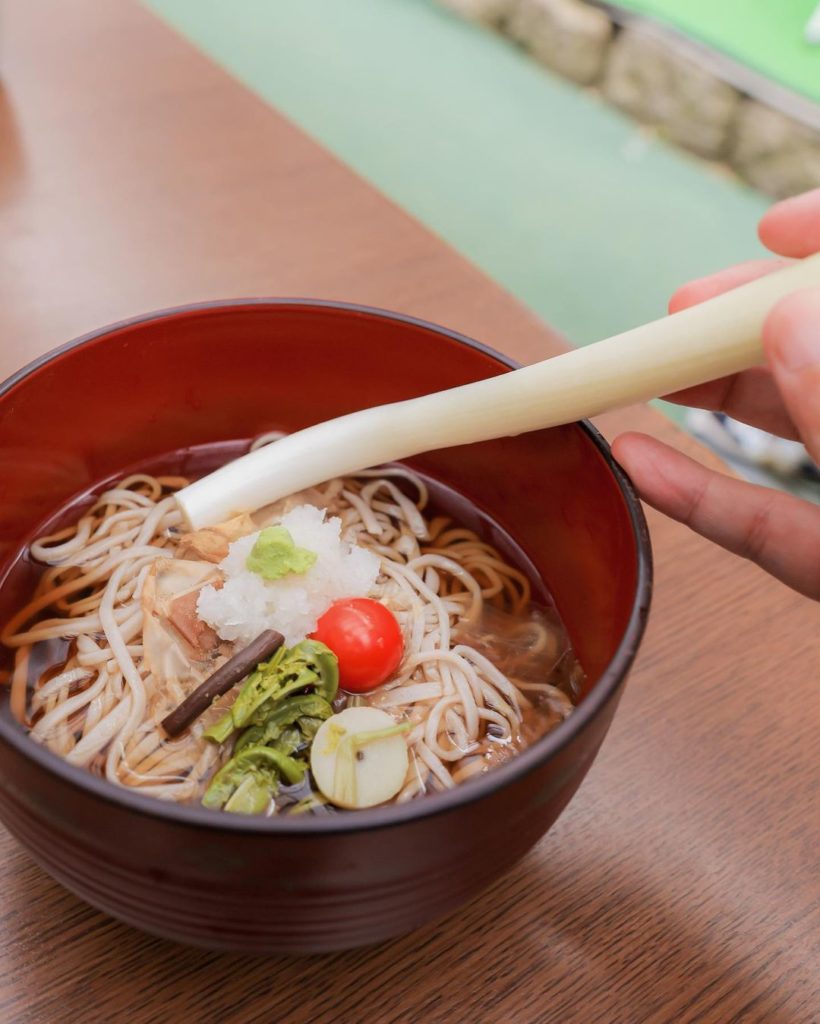
Negi soba
Image credit: @toshi_d_photos
Aside from admiring the rows of thatched houses, you should also visit the local restaurants for a taste of the area’s local speciality – negi soba. Unlike the usual soba dish, where your bowl of noodles is served with a topping of freshly sliced green onions, negi soba comes with a whole Japanese long onion that doubles as chopsticks.
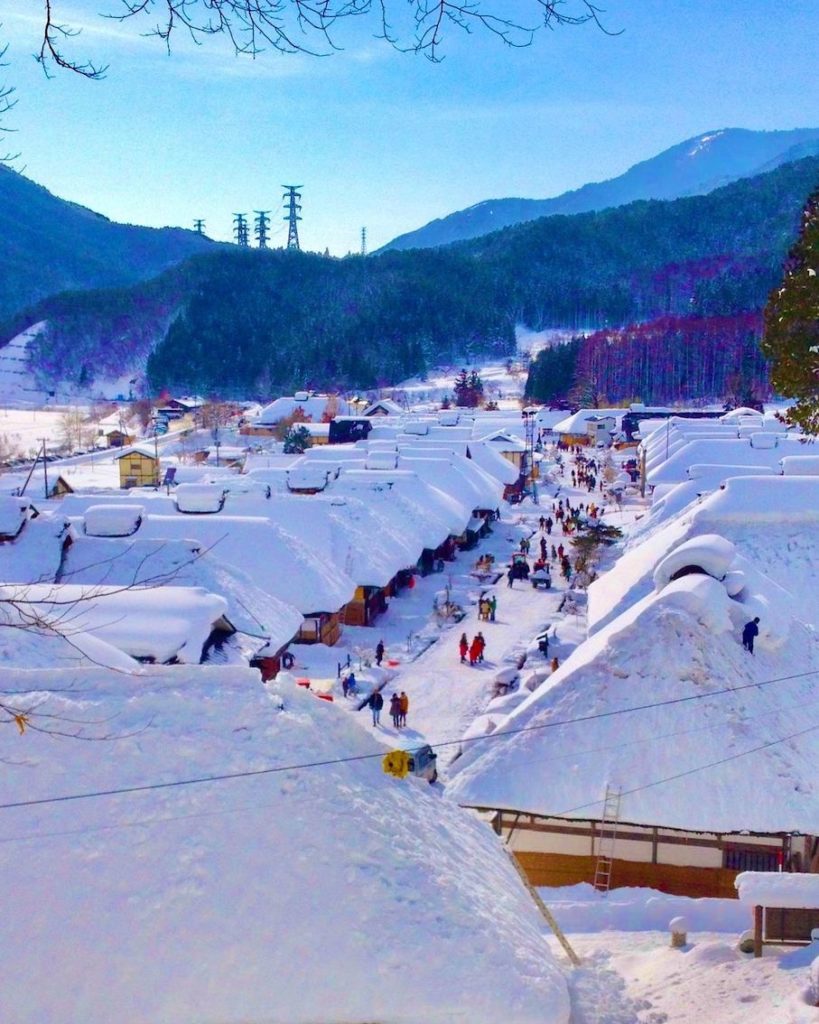
Image credit: @richann14
Opening hours: 24 Hours, Daily
Address: Ouchi, Shimogo, Minamiaizu District, 969-5207 Fukushima
4. Nakamachi – Matsumoto
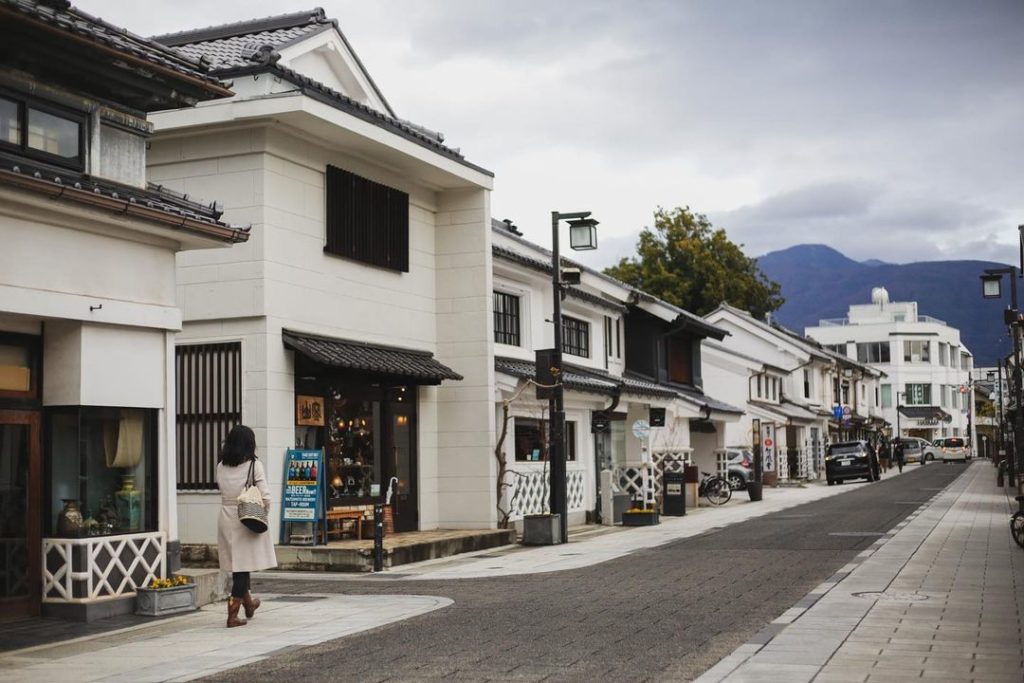
Image credit: @saana_photo
Nakamachi is a former merchant district, lined with characteristic black-and-white stone wall buildings with criss-cross patterns, in Matsumoto City.
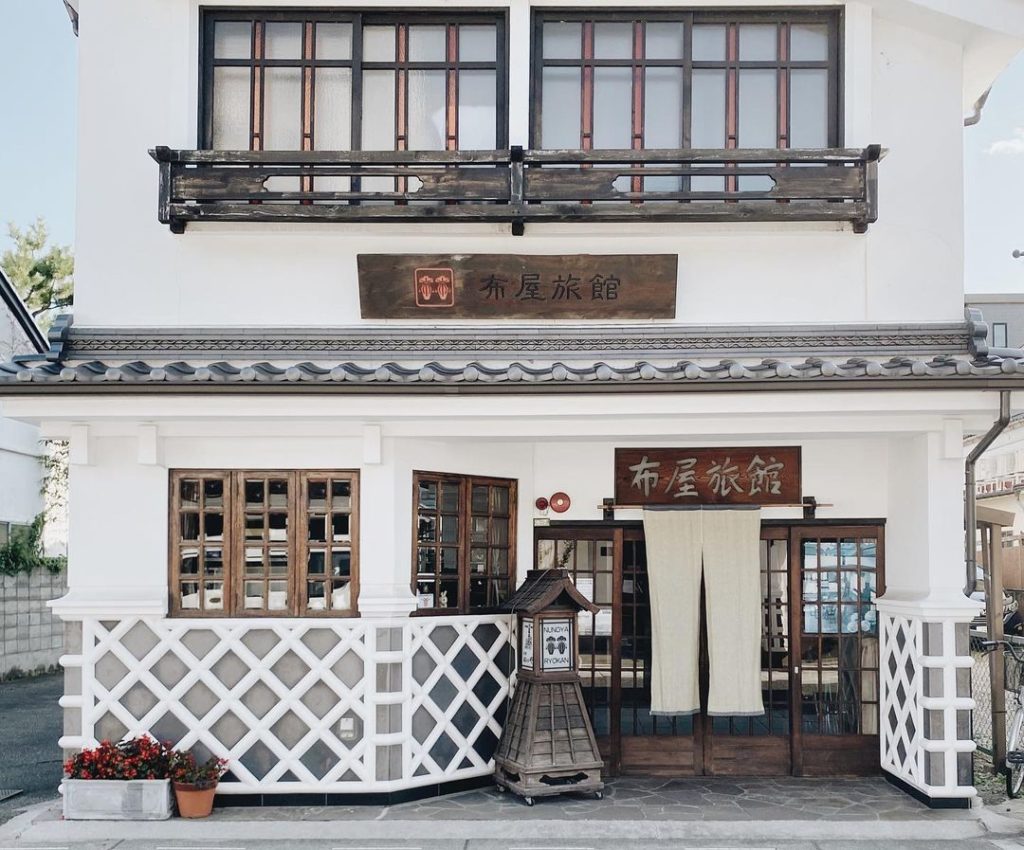
Image credit: @tktmo
The distinctive design of these buildings was motivated by pragmatic reasons. During the Edo period, frequent and big fires resulted in the loss of many facilities and townhouses.
In a bid to make the buildings more fire resistant, merchants built houses with namako walls (なまこ壁; namako kabe). The white criss-cross patterns on black slab walls are meant to make the building fireproof and resilient against natural disasters.
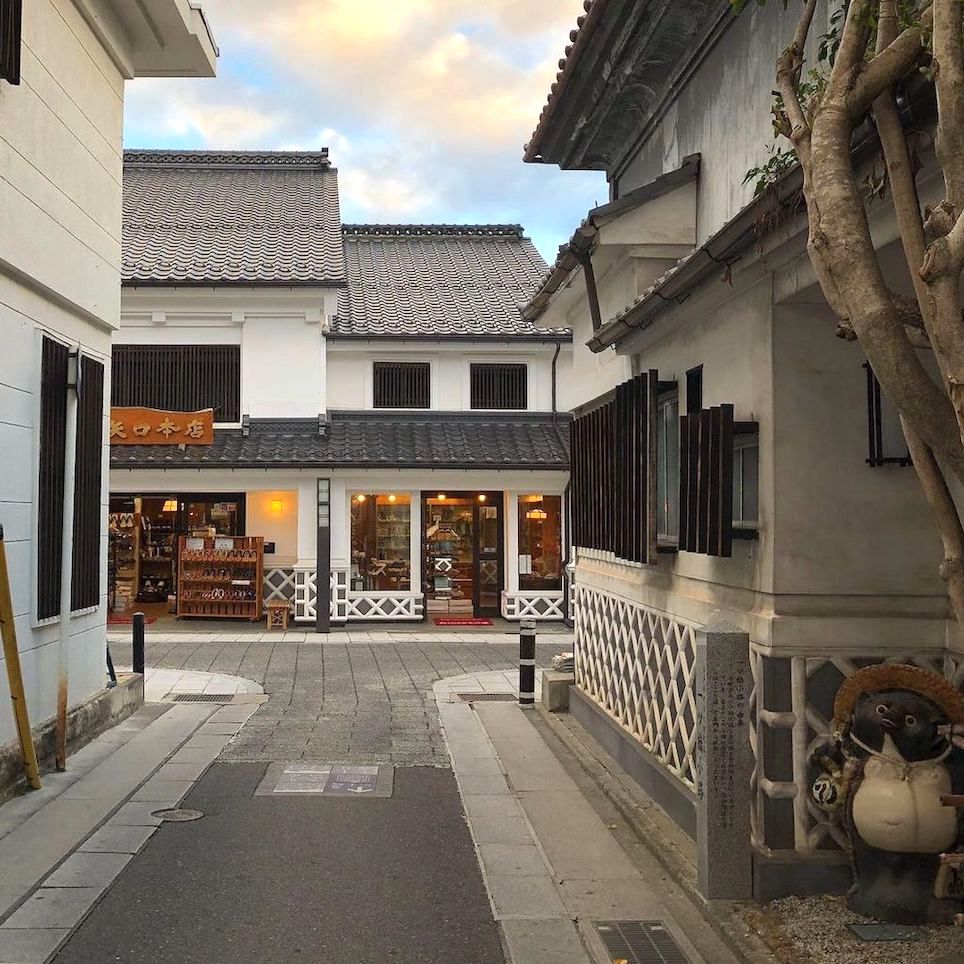
Image adapted from: @tsutsuuraura_jpn
Today, Nakamachi is still lined with many storehouses with said designs, making for a unique townscape that is different from what you’d expect to find at a traditional Japanese town.
The area has been transformed into a quaint shopping district, with handicraft shops, cafes, and restaurants occupying the storehouses. It is a great place to spend a leisurely afternoon after you’re done sightseeing at the nearby Matsumoto Castle and Matsumoto City Art Museum.
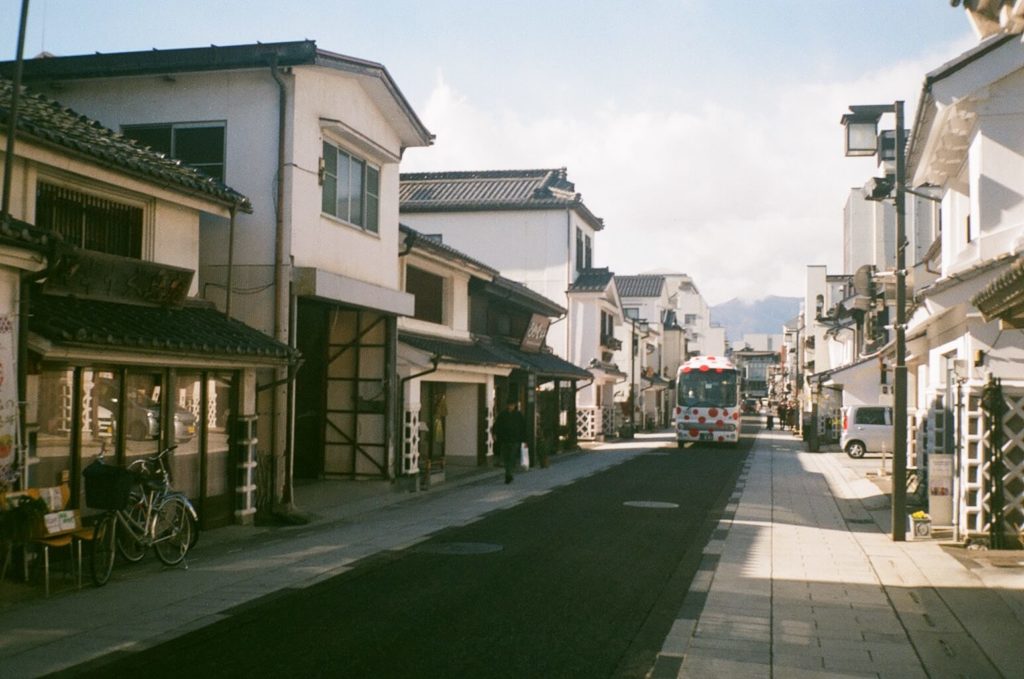
Image credit: Xiu Ting Wong
Opening hours: 24 Hours, Daily
Address: 3 Chome-2-14 Central, Matsumoto, 390-0811 Nagano
5. Ine – Kyoto
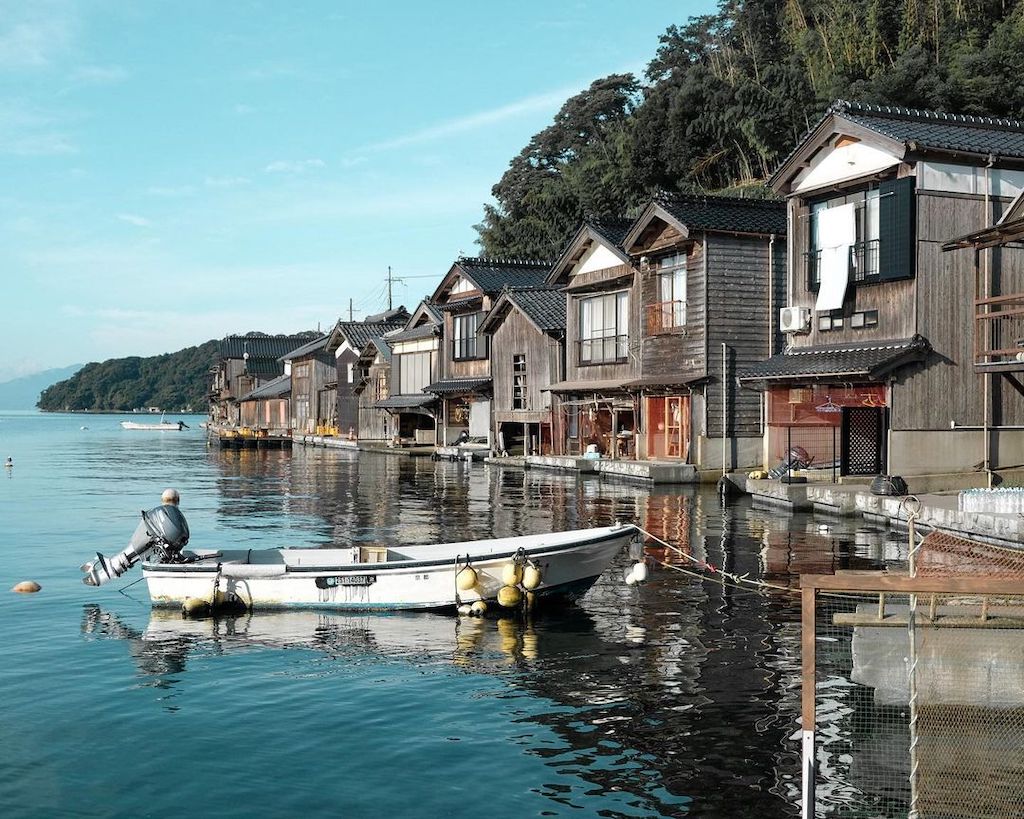
Image credit: @thewanderingcam
To escape from the hordes of tourists in Kyoto city, hop on a train and head northwards, towards Ine. Dubbed the “Venice of Japan”, the quiet fishing village is located just 3 hours away from Kyoto.
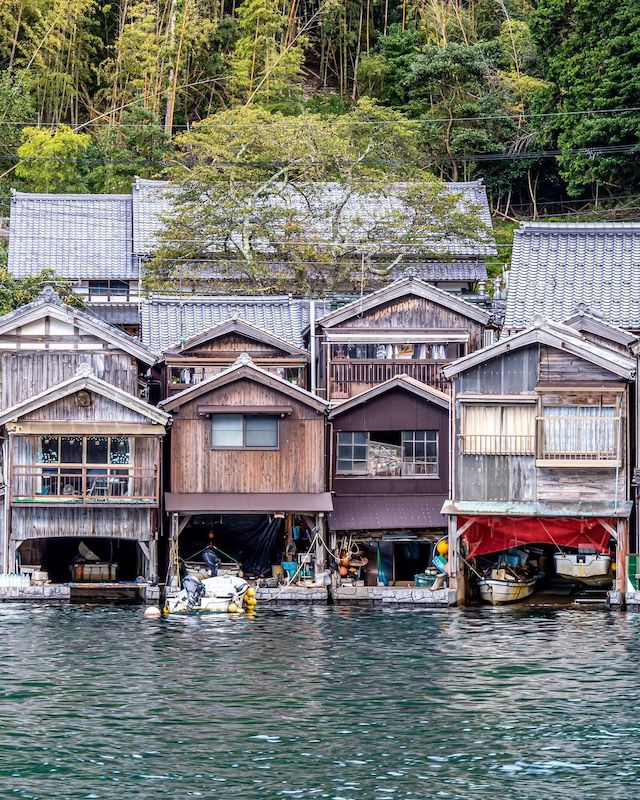
Image credit: @nkt0703
Boathouses (舟屋; funaya) – traditional houses unique to the area – are lined in rows and built on the waters of Ine Bay, giving the illusion of “floating” structures.
Typically, the houses have 2 storeys. The 1st floor is used to accommodate fishing boats and gears, while the 2nd functions as living quarters for fishermen. The houses are believed to have existed since the Edo period and over 200 funayas remain in the fishing village presently.
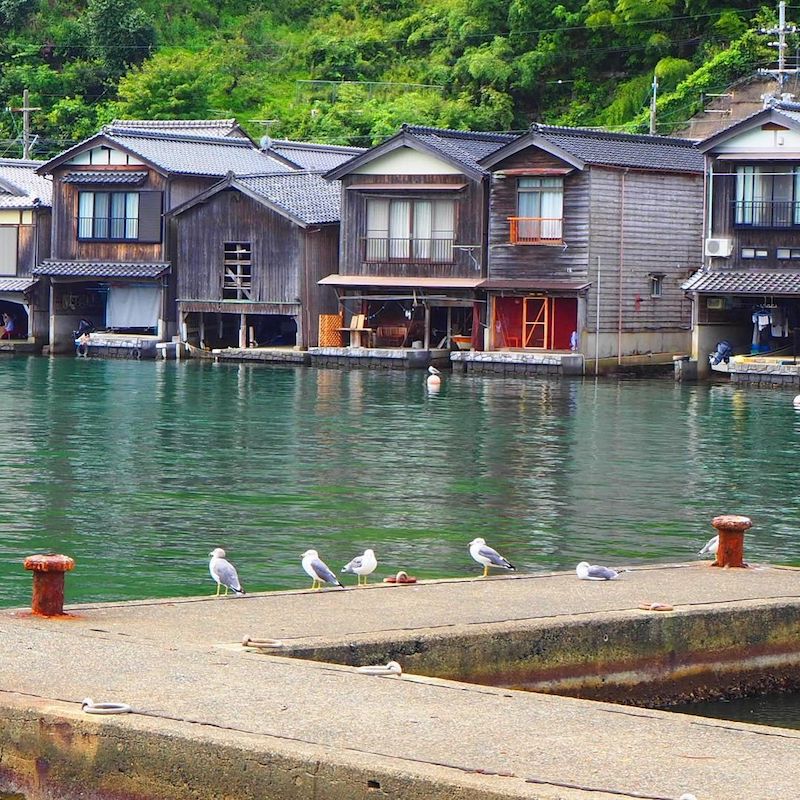
Image credit: @_ti.ro.l_
The fishing village was designated as part of the Groups of Traditional Buildings in 2005, and it mandates the preservation and protection of the traditional boathouses.
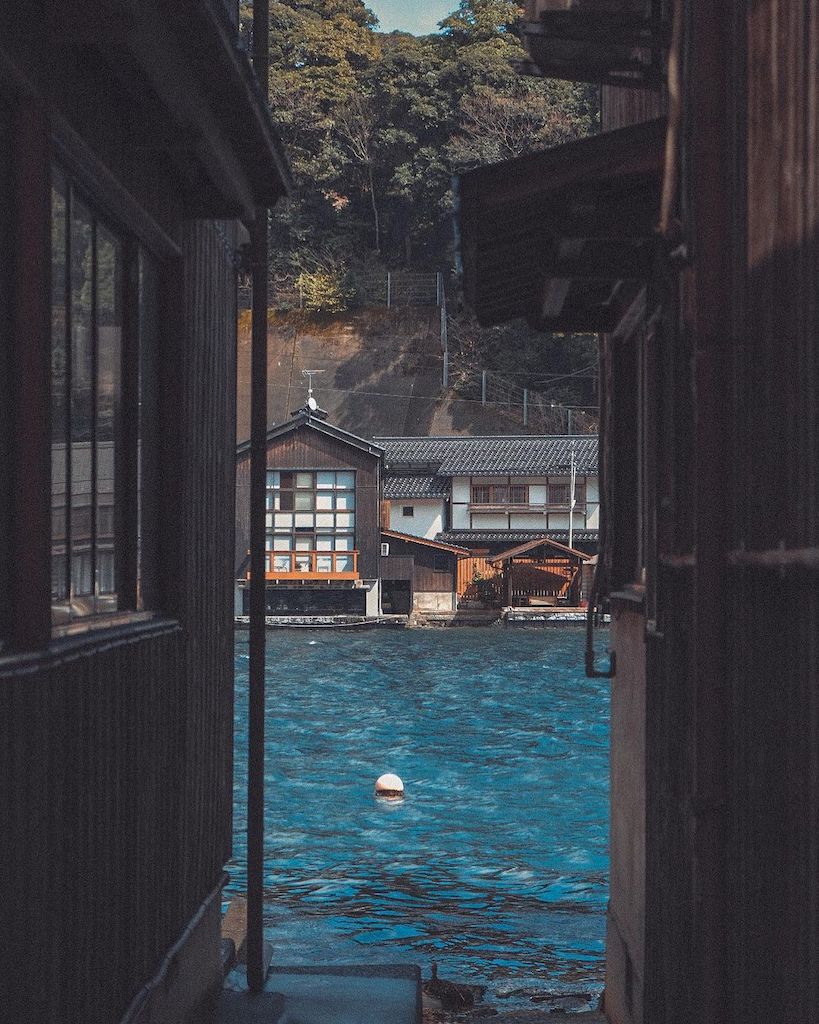
Image credit: @____y.eon
If you’d like to spend the night in Ine, you can stay in a funaya that has been converted into a guesthouse. There, you can wake up to stunning views of the sea.
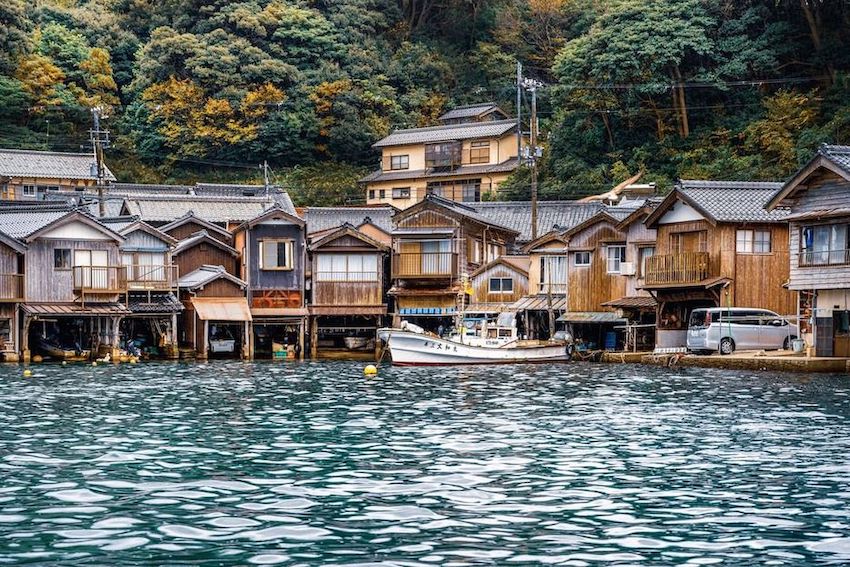
Image credit: @erikaaaaa058
Opening hours: 24 Hours, Daily
Address: 77 Hirata, Ine, Yoza District, 626-0423 Kyoto
6. Tsumago-juku – Nagiso
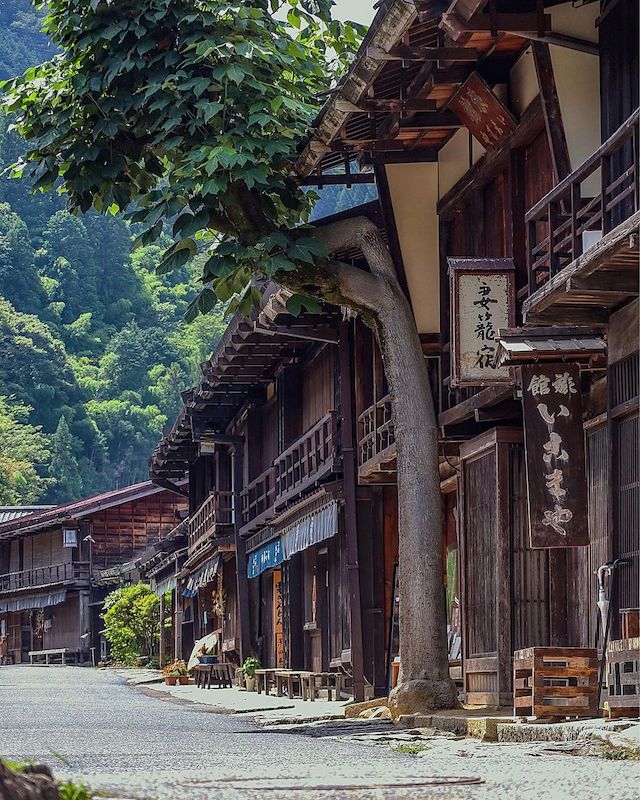
Image credit: @hmasatoh
Tsumago-juku, a post town located at the south-western tip of Kiso Valley, is a long and narrow traditional town that is about 6km long. It is 1 of the 69 post towns on the Nakasendō, an important ancient route that connected Tokyo to Kyoto during the Edo period.
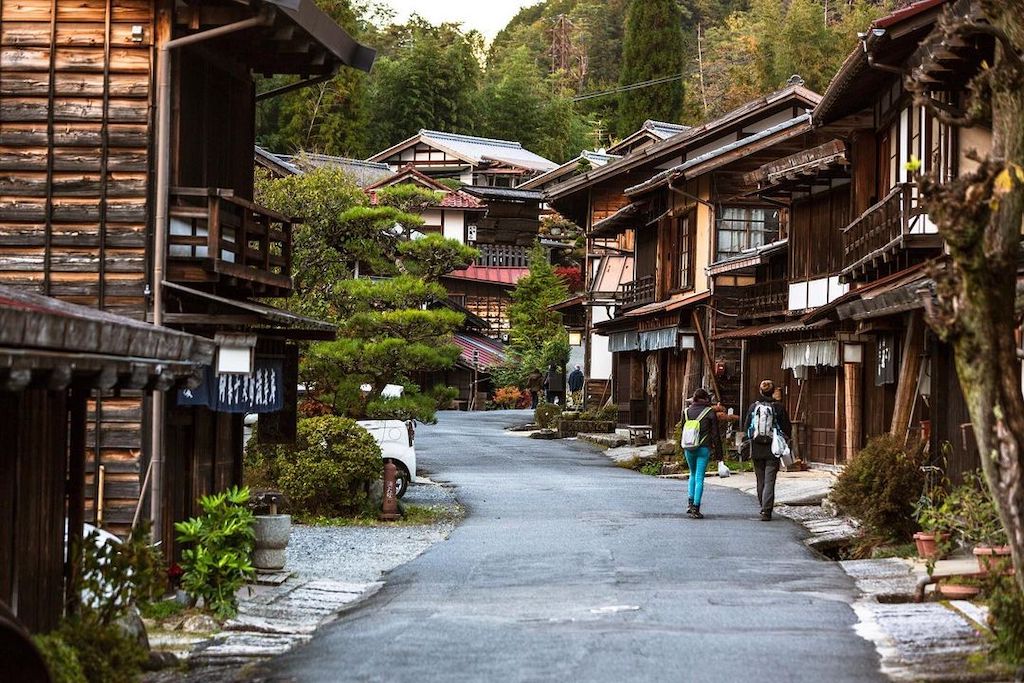
Image credit: @alucky_yuya72
In its heyday, Tsumago-juku was a thriving town that served as a convenient rest stop for travellers. However, by the Meiji era, the town lost its function as a post station. Newer and better railways and routes were constructed, bypassing the town and rendering it obsolete.
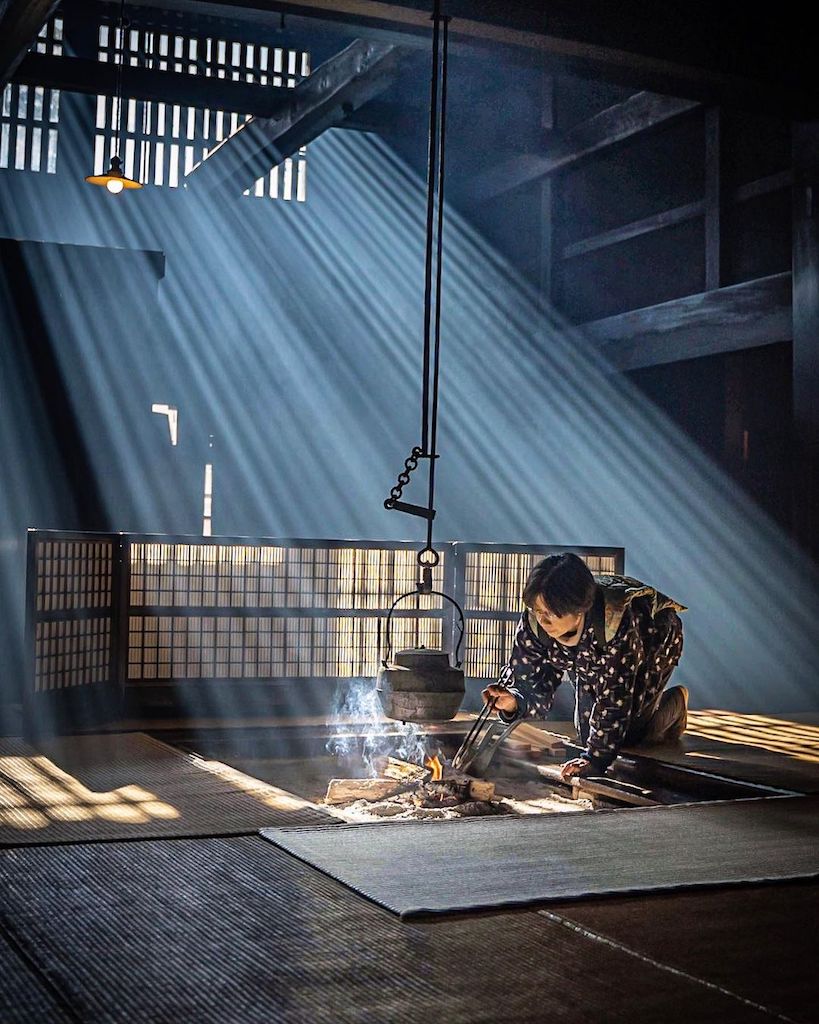
Image credit: @yukkamemagic
But in the 1960s, preservation efforts were reviewed and a series of conservation work began in the town. Most of the traditional buildings in the town today have been restored to its former glory, retaining the old atmosphere of the Edo period.
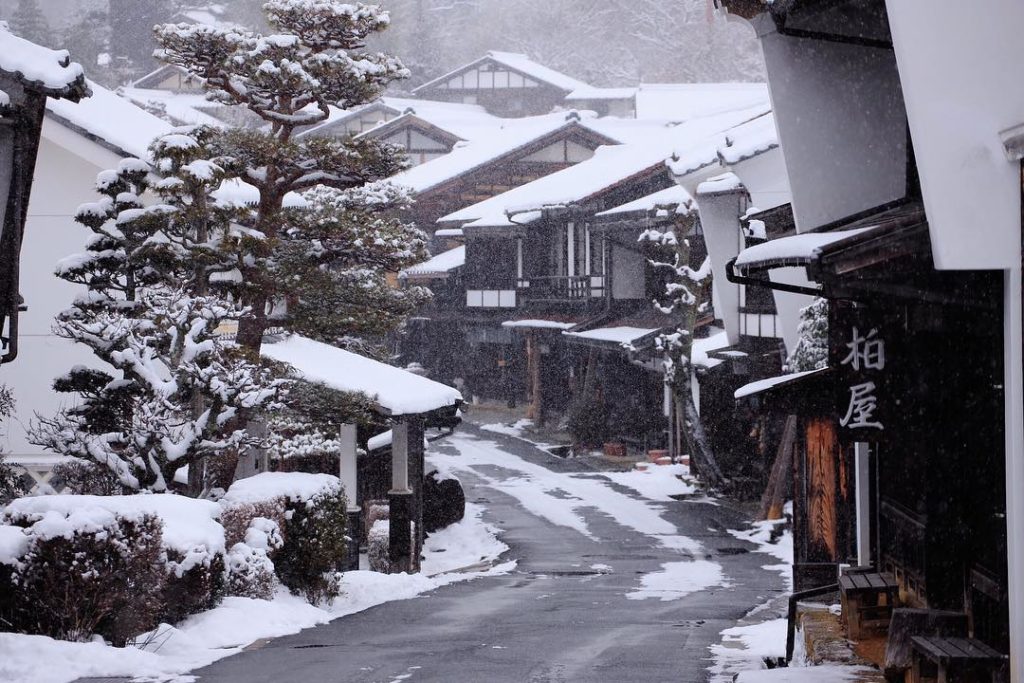
Image credit: @takayoshi_ao
In order to protect the historical townscape, no cars are allowed on the main street. The people of Tsumago-juku even created the 3 principles of “no selling, no renting, and no destroying” in an effort to protect the town for generations to come.
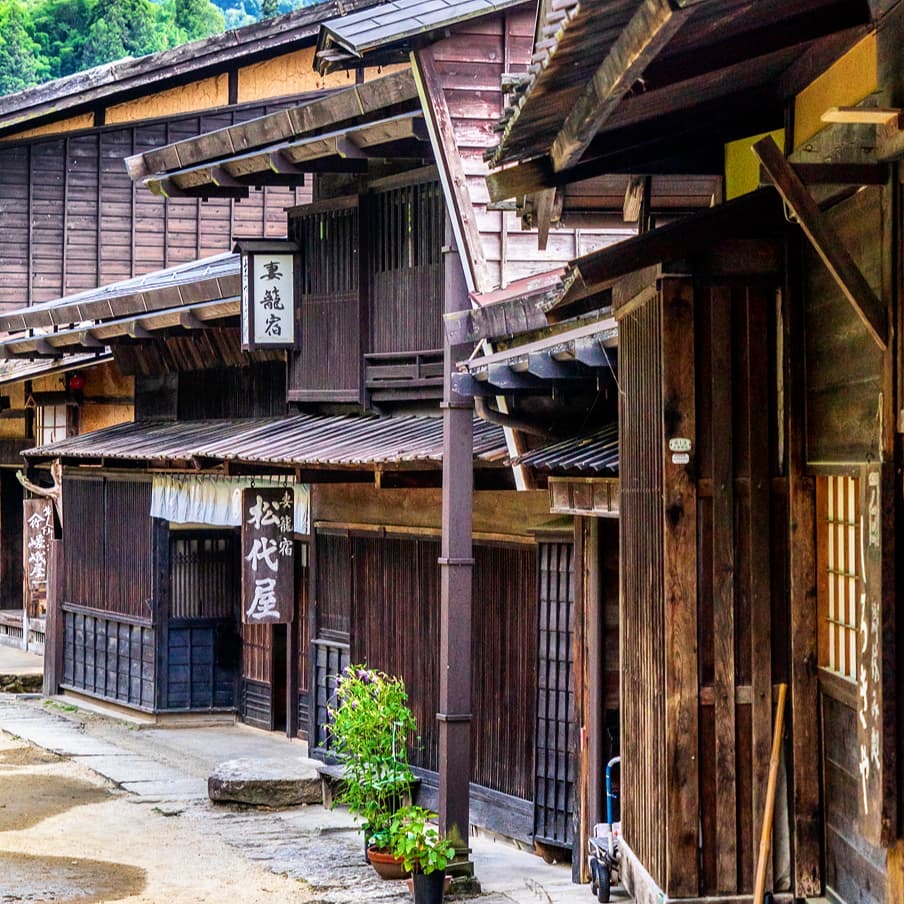
Image credit: @greenwood_tree
Opening hours: 8.30AM-5PM, Daily
Address: 2159-2 Nagiso, Kiso District, 399-5302 Nagano
7. Kitsuki – Oita
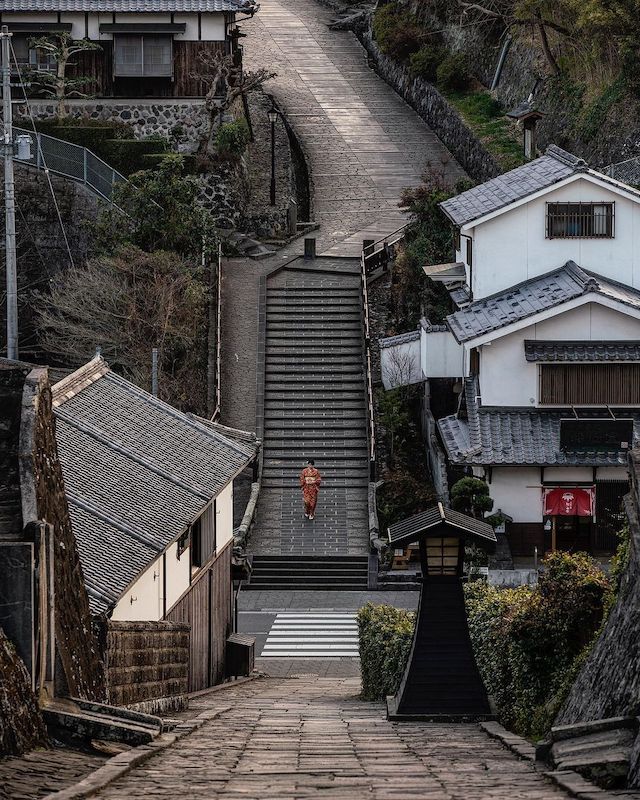
Image credit: @tourismoita
Kitsuki is an ancient castle town (jōkamachi; 城下町) located in Oita Prefecture. Castle towns refer to towns that sprung up and border castles throughout Japan. Feudal lords would reside in the castle, while his samurai warriors live in said towns surrounding the castle.
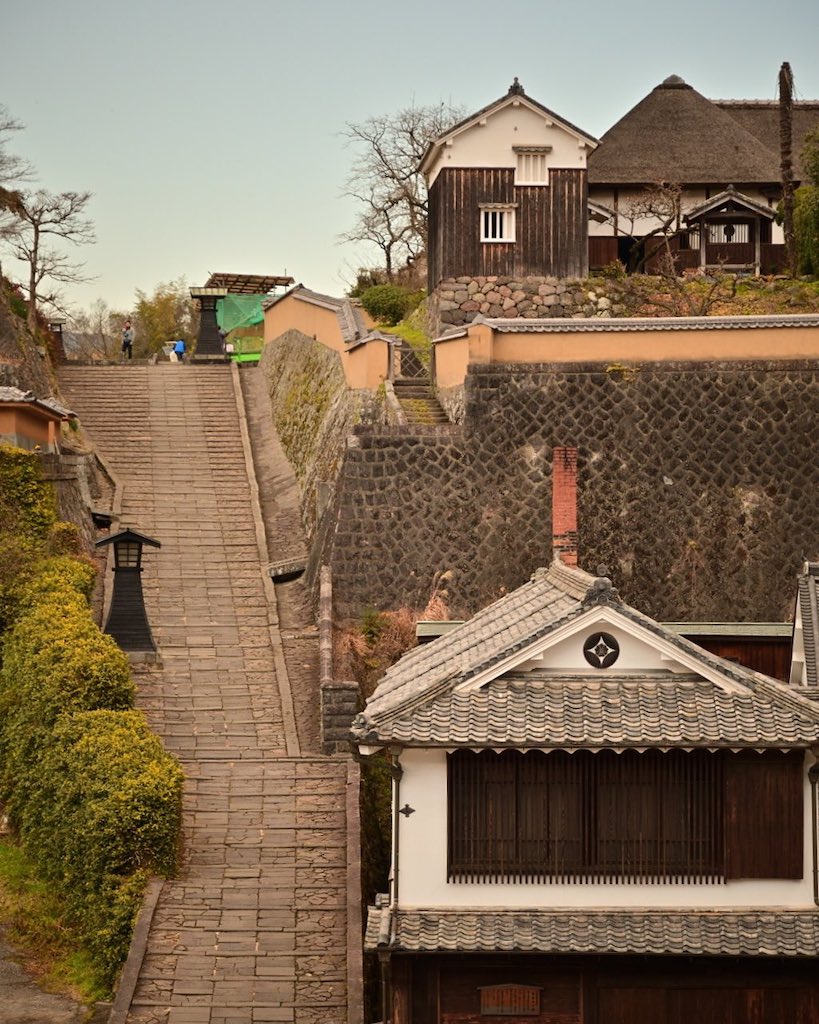
Image credit: @snowmandemo
Kitsuki is best known for its unique “sandwich” layout – 2 samurai districts are set atop elevated hills, with a merchant district interposed in the middle. Visitors can get a sense of the everyday life of samurais and tradesmens during the Edo period.
Though there are multiple slopes connecting the samurai and merchant districts, Suyanosaka (酢屋の坂) is the most popular. Literally translated to “the slope of the vinegar shop”, the name is derived from the fact that vinegar shops used to line the hill.
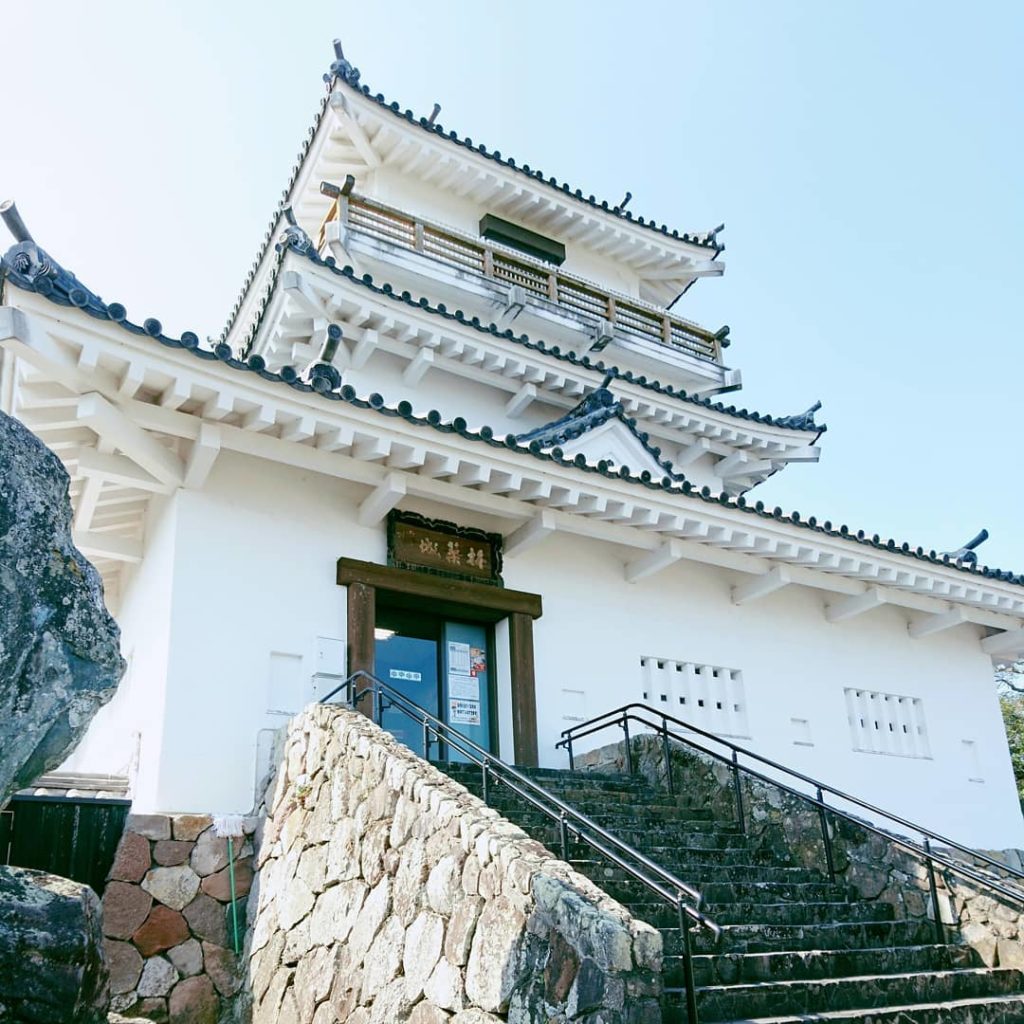
Image credit: @cocoa_brunch
End your sightseeing at Kitsuki Castle, which is said to be the smallest castle in Japan. Despite its humble size, the castle boasts a superb view that overlooks the castle town and the sea.
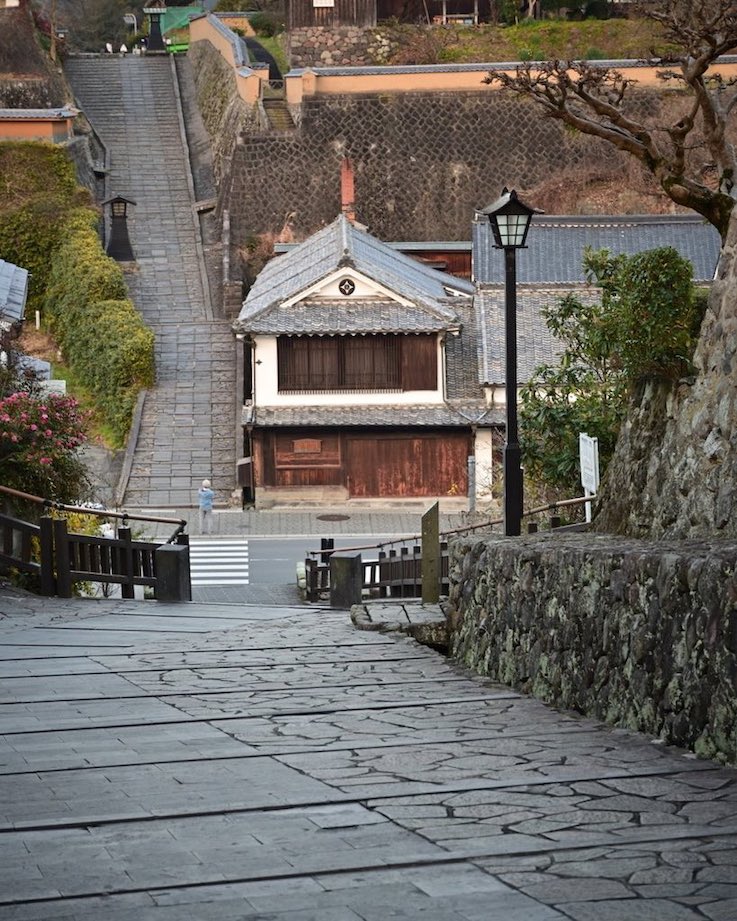
Image credit: @snowmandemo
Opening hours: 24 Hours, Daily
Address: Kitsuki, 873-0001 Oita
8. Oharai-machi – Ise
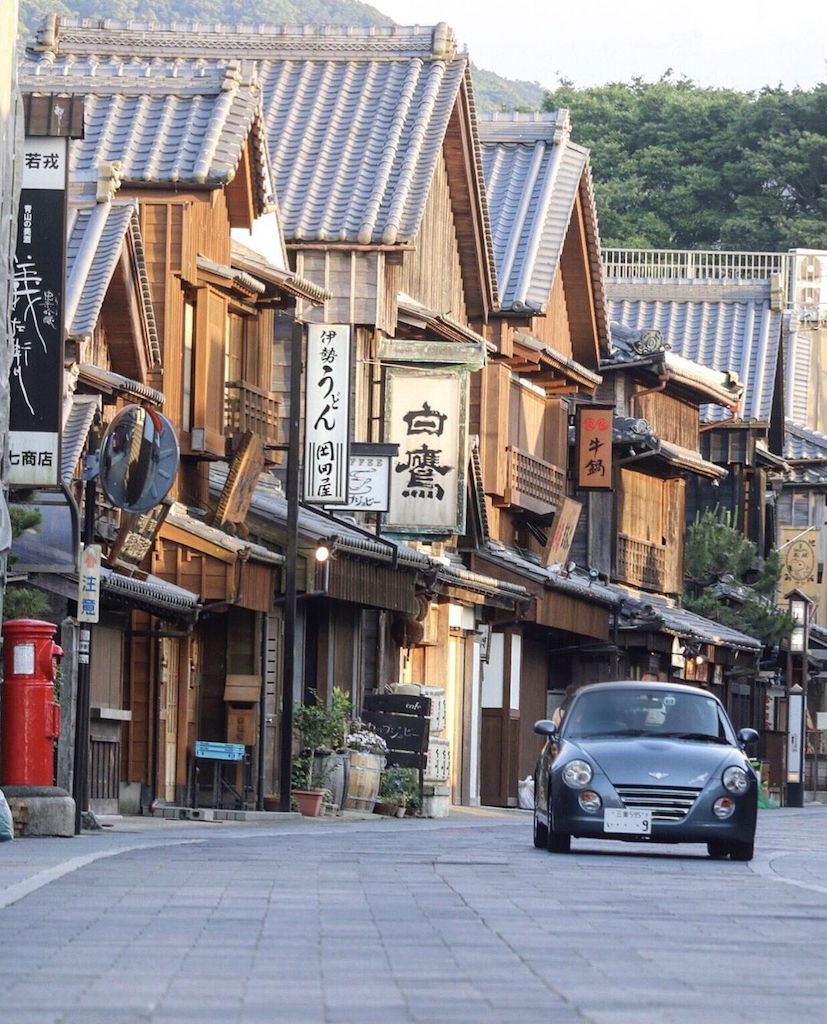
Image credit: @akemini122
Spanning over 800m long, the beautiful cobbled street of Oharai-machi leads up to the sacred inner shrine of Ise Jingu. Visitors will find Oharai-machi abuzz with activity as the area is lined with an array of souvenir shops, restaurants, and cafes.
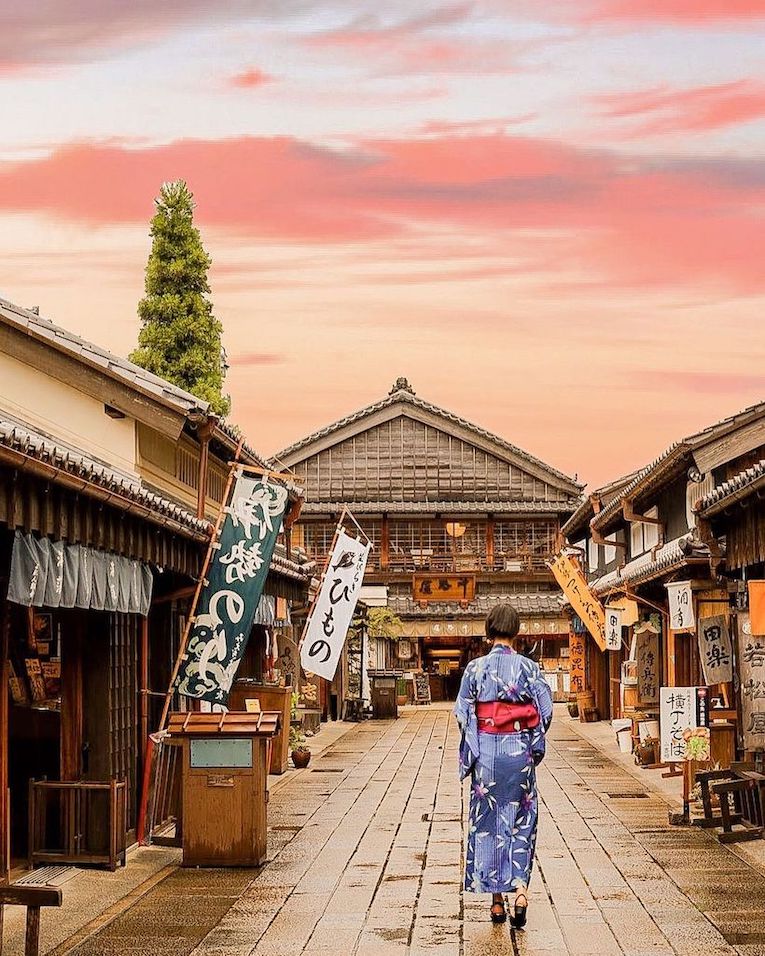
Image credit: @meyoutravels
During the Edo period, pilgrimages to the shrine were in vogue and many would travel there for purification purposes. Over time, the street leading up to the shrine became immensely popular. Shops selling souvenirs and woodblock prints were set up to cater to travellers who came from all over the nation.
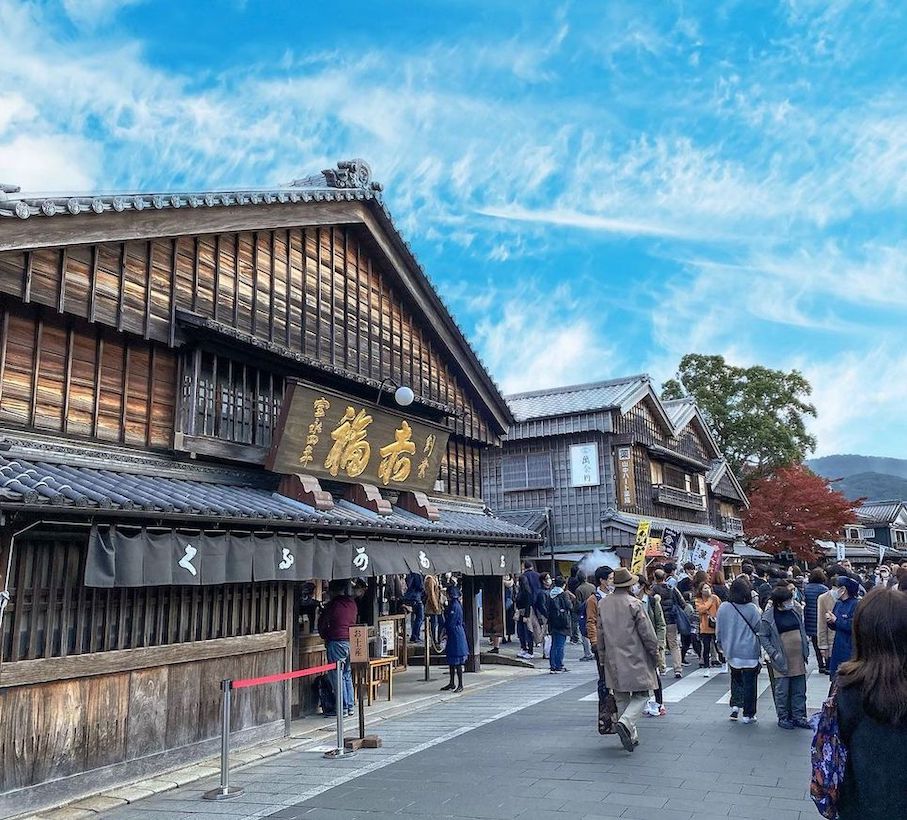
Image credit: @ko_3.rms
Though the pilgrimage town has managed to retain an old atmosphere with its traditional buildings and storefronts, only a selected few are true-blue historic buildings from the past.
Opened in 1993, Okage Yokocho – a small section in the middle of the pilgrimage road – is actually a reproduction of the busy temple town from the past.
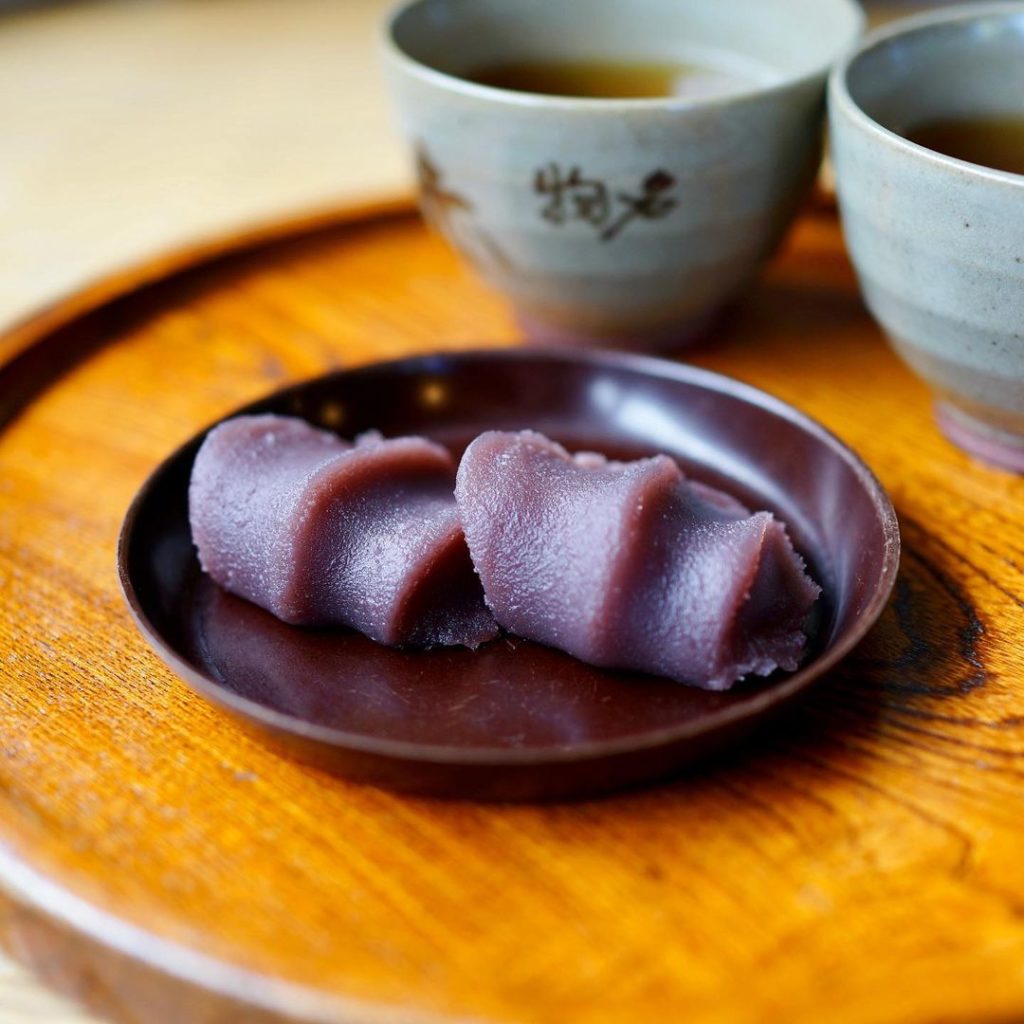
Image credit: @k.irie.1101
When you’re there, be sure to give regional specialities such as akafuku mochi, a chewy mochi wrapped with a layer of sweet bean paste, and Ise udon a try.
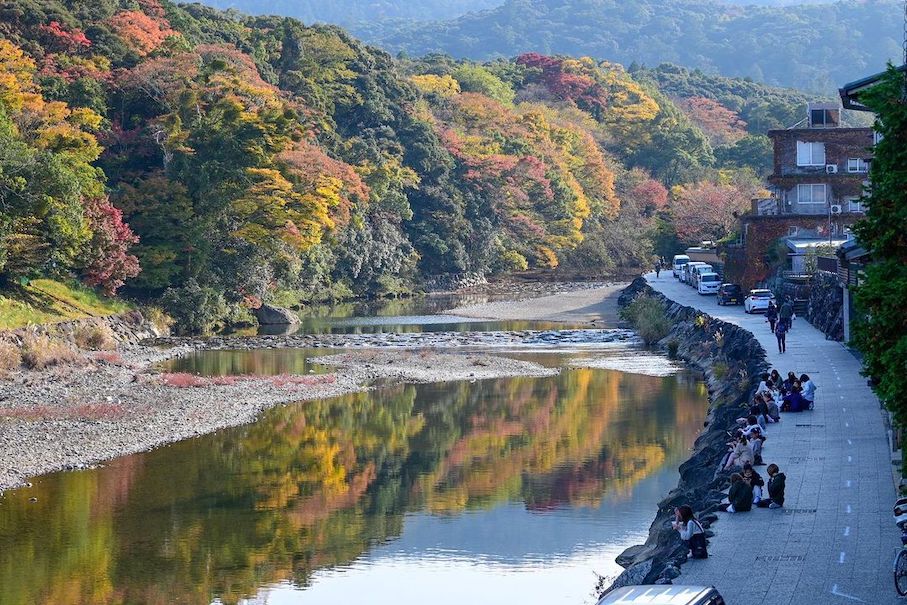
Isuzu river, which flows through the Ise Grand Shrine.
Image credit: @sinccchanon
Opening hours: 9.30AM-5PM, Daily
Address: 52 Ujinakanokiricho, Ise, 516-8558 Mie
Picturesque traditional Japanese towns
From quaint fishing villages to well-preserved merchant towns, each of these traditional Japanese towns have their own quirks and charms. Consider exploring these historic districts the next time you’re in Japan.
For more places to visit in Japan, check these out:
- Cat ryokan in Yugawara
- Japanese Zen gardens
- Kyoto cafes in heritage buildings
- Mountains in Japan
- Autumn leaves viewing spots
Cover image adapted from (clockwise from left): @andytanumihardja, @thewanderingcam and @yukkamemagic
